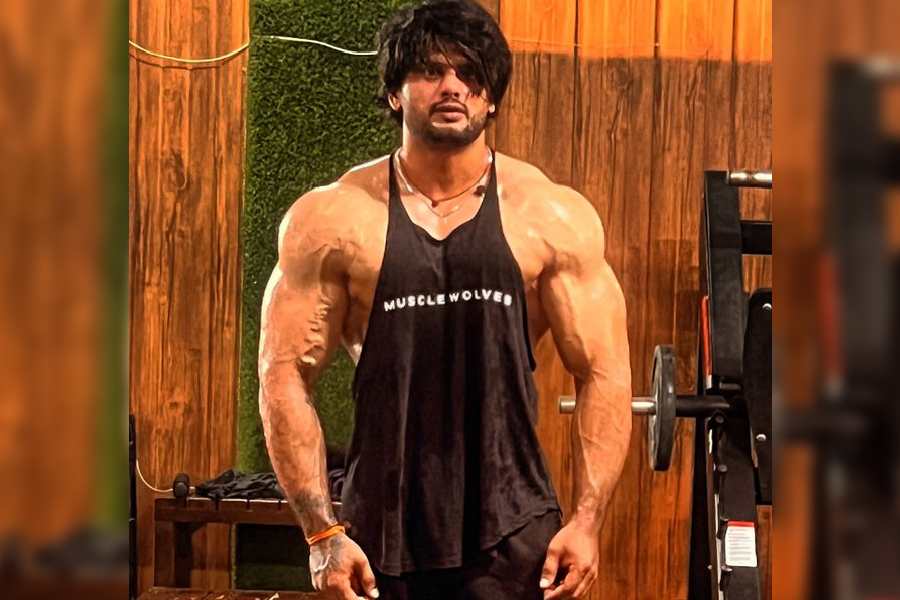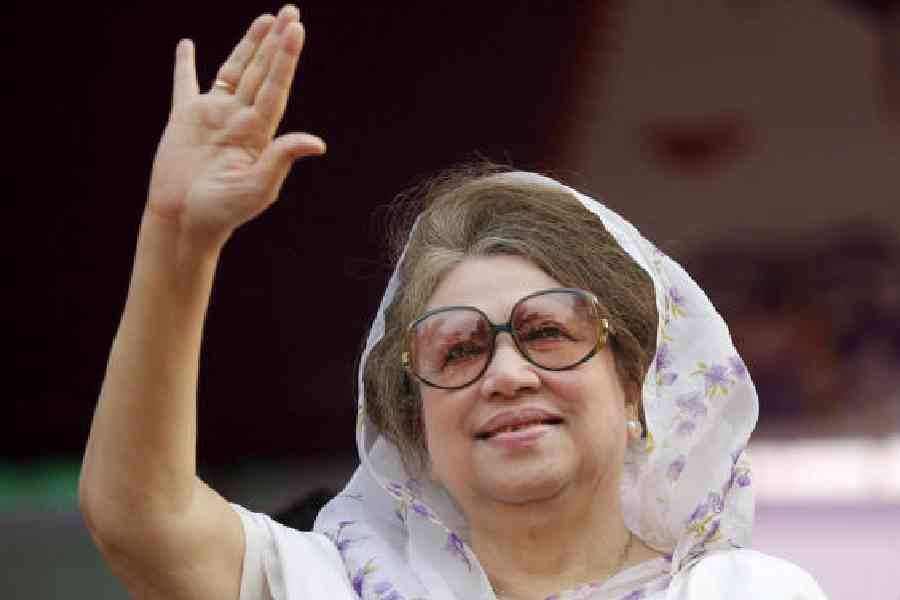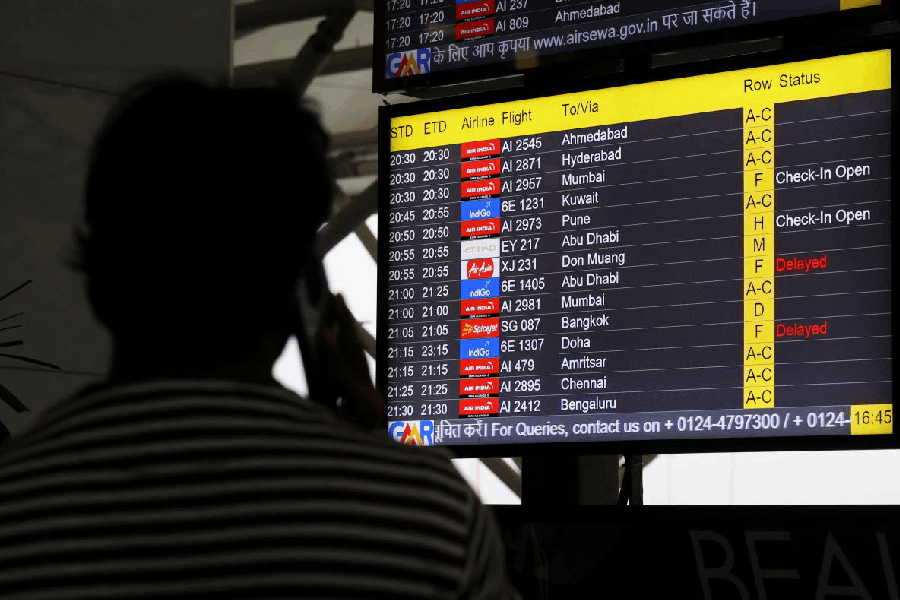 |
It’s 10 in the morning, and already Halle Berry is being chased, though a better word for what’s going on might be “hunted”. Considering this, the Oscar-winning actress — one of the stars of the film Cloud Atlas [now playing at plex near you] — makes her way into the lounge of the Four Seasons Hotel as if emerging from savasana at the end of a two-hour yoga class. Her smile appears warm, her outfit (perfectly ripped jeans and a T-shirt) unremarkable. Her hair — back to the short cut she has favoured over the years, that only a woman this beautiful could pull off with such success — looks great though un-fussed-over, as does the rest of her, never mind that she just celebrated her 46th birthday. She doesn’t carry herself like a woman under siege.
“They’re outside my house every morning,” she says. We’re speaking of the paparazzi, of course.
“I get it about the celebrity stuff,” she tells me softly, sliding into her seat. “It’s part of my job to recognise that there’s a certain part of my life the public wants to hear about. But it’s not okay that they’re doing terrible things to my daughter. One night, after they chased us, it took me two hours just to get her calmed down enough to get to sleep.”
Nahla is four, the child of Berry’s five-year relationship with Gabriel Aubry, a French-Canadian model 10 years her junior, from whom she parted (cordially, at first, with vows on both sides of working together as parents, for the good of their child) two-and-a-half years ago. During the Cape Town filming of Dark Tide in 2010, Berry (already separated from Aubry, to whom she was never married) got together with her French co-star, Olivier Martinez, to whom she is now engaged. In June she was ordered to pay Aubry $20,000 a month in child support. Nobody’s pretending they’re friends anymore.
She and Nahla are just back from the Toronto Film Festival, site of the Cloud Atlas premiere, where she saw the film for the first time. Some reviewers compared Cloud Atlas to Stanley Kubrick’s 2001: A Space Odyssey, called it revolutionary, an artistic masterpiece. Other critics displayed considerably less awe — including one from The Times, who used the word “dopey.”
In any case, Berry’s role in the movie will surely be termed a comeback. After winning an Oscar for Monster’s Ball in 2002, she continued to work almost non-stop until her daughter’s birth in 2008, at age 41, then took two years off. With Cloud Atlas it feels very much as if Berry is back — even if the actress herself doesn’t see it that way. “I never went anywhere,” she says. “I just seized the chance to be in an extraordinary film with an extraordinary cast, exploring an idea that’s relevant to everyone.”
It is without question her most ambitious role in years. In the film, Berry plays six characters, among them: a 19th-century Maori tribeswoman enslaved on a tobacco plantation; the sexually frustrated wife of a maniacal 1930s German composer; an investigative journalist in 1970s San Francisco, attempting to avert a nuclear-plant disaster; and an other-worldly refugee from a dying tribe in the future on a doomed planet. For that role, Berry needed not simply to look good in a white jumpsuit (she did) but also to speak in an invented dialect with her co-star Tom Hanks.
“She’s got this way of looking at the camera,” Hanks says. “Very deep and still. There’s a calm about her, and that comes through in her performances. She’s a peaceful pond on a late summer’s day. No maintenance or hurly-burly.”
Berry’s looks are no doubt a great gift. Even now, more than halfway through her 40s, she retains perfect skin, a long, elegant neck and a body that is both slim and womanly. (She says a diagnosis of Type-1 diabetes, at age 19, made healthy eating and exercise a necessity.) But, she says, “just because they see my face doesn’t mean they see me. A person’s self-esteem has nothing to do with how she looks.”
THE UNDERDOG TO EVERYWOMAN
 |
In the late 1960s, when Berry was a toddler, it wasn’t hard to find a black maid on the screen, large or small. But except for Diahann Carroll, and Nichelle Nichols on Star Trek, there were virtually no glamorous black leading ladies on television. Among Oscar winners, the only name on the list: Hattie McDaniel, for her role as the maid in Gone With the Wind. (And in 1990, Whoopi Goldberg, as Best Supporting Actress in Ghost.)
After winning the Miss Teen Ohio contest, and later going on to become the first runner-up in the Miss USA pageant, Berry studied for a year at Second City in Chicago. While she was there she got a call from a manager in New York, Vincent Cirrincione, looking for a black actress to read for a soap opera. Knowing no one in New York but Cirrincione, she got on a plane. Her breakthrough came with a TV series called Living Dolls, followed by Spike Lee’s Jungle Fever in 1991, in which she played a crack addict. She had intended to read for another role but told the director she wanted to play the drug addict. She remembers that Lee said, “Well, you better go wash off your make-up.” She did and she got the part.
Since then Berry has starred in more than 30 movies, winning, in addition to the first Academy Award for Best Actress ever given to a black woman, an Emmy for HBO’s Introducing Dorothy Dandridge in 2000. The scene in Monster’s Ball in which Berry’s character makes love to Billy Bob Thornton, playing a corrections officer who presided over her husband’s execution, stands as one of the most erotic I’ve ever seen on the screen, as a naked and moaning Halle Berry — more visibly naked than most A-list actresses would allow — crawls over Thornton’s character growling words that will no doubt be associated with the actress forever: “Make me feel good.”
She also appeared in X-Men and played a Bond Girl and Catwoman, for which she won a Razzie award for Worst Actress. She actually showed up to accept, delivering, at the podium, a perfect satirical portrayal of a weeping and trembling actress, gripping her award tightly, thanking every person she ever met.
“I come from humble beginnings,” she says. “I always felt like the underdog. Even that night I won the Oscar, I had a fundamental knowing, it was just a moment in time. Driving home that night, back to my house, I felt like Cinderella. I said, ‘When this night is over, I’m going back to who I was.’ And I did.”
In Cloud Atlas, the range of characters Berry portrays goes from the most humble to a woman of the future, Meronym, whom Berry describes as “the priestess of the world”. These characters are meant to represent aspects of the same soul, reincarnated over time in different bodies and at different stages of its evolution. If this is how a human soul evolves, I ask her, where has hers gotten to so far?
“I’ve been all those women,” she tells me. “Luisa Rey” — the crusading journalist reporting on the cover-up of an imminent nuclear disaster — “corresponds to who I was when I first started to make a living, the part of myself that was hopeful, the part that believed I could do anything. Meronym is that part of me I discovered after I had Nahla.”
Before we met, I had heard Berry described as “fragile”. During her Oprah interview, her voice broke more than once on the subject of having lost her trust in men, and though that was eight years ago, the evidence of vulnerability remains a significant part of what draws you to Halle Berry. She is a woman whom people (men, in particular) would doubtless feel moved to protect. Though it is possible that those same men may end up being the ones from whom she needs protection.










